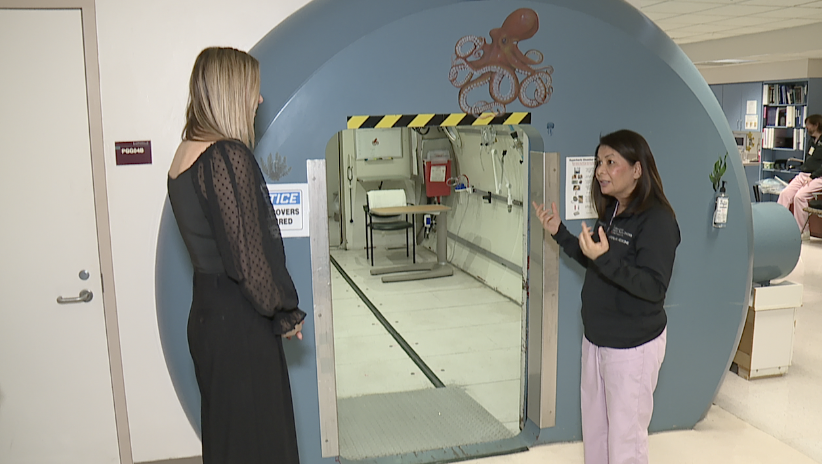BALTIMORE, Md. — "The entire cabin is pressurized with air. And then our patients will wear a head tent, or a plastic helmet, which is how they get the 100% oxygen," Dr. Kinjal Sethuraman, medical director for the Center for Hyperbaric and Dive Medicine at the University of Maryland Medical Center, said as she showed WMAR-2 News' Elizabeth Worthington one of the largest hyperbaric chambers in the country, and the only 24/7 one in Maryland.


"We also serve D.C., parts of Virginia, West Virginia, Delaware, and parts of Pennsylvania," she said.
The University of Maryland Medical Center uses this chamber to treat several conditions, including carbon monoxide poisoning. Right now, the hospital is seeing a lot of that.

"In any given year, we treat about 60 patients with carbon monoxide toxicity. Already, in the last month and a half, we've had 20. So we're just on this trajectory of treating many more patients," Dr. Sethuraman said.

Mother Nature is mostly to blame. The colder weather can lead to overworked furnaces. Faulty heaters or generators can also pose a risk.
But especially with rising energy rates in our area right now, trying to save on that next bill could lead people to turn to unconventional - and dangerous - ways of keeping warm.
"When people start thinking about ways to save money on their electric bill, they might use methods that are not as safe," Dr. Sethuraman told WMAR-2 News. "We see stoves, we see ovens, we see barbecue grills indoors. So you know, desperate times."
Carbon monoxide is called the silent killer - it's odorless, colorless, and non-irritating. And it's almost just as difficult to tell when you're sick from exposure to the gas.
"Because the symptoms that people get are really vague and can be blamed on a lot of other things that happen. People get headaches, they get nausea, they might feel like they have the flu, which is also a big problem right now," Dr. Sethuraman said. "The differential for these vague symptoms are really broad and oftentimes, we have to really think outside the box and think about carbon monoxide when we see these patients come to the hospital."
Dr. Sethuraman says the biggest misconception about carbon monoxide is, "that it's benign, that a little bit doesn't hurt. If people suspect that they have been exposed to carbon monoxide, they should get checked out. Don't ignore even the mildest symptoms."
While you can't see, smell, or taste carbon monoxide, you can hear the beeps of your detector. Since 2008, all newly constructed homes in Maryland must have carbon monoxide alarms, as well as all hotels and rentals. If your home is missing one, you can purchase one online or get one for free from your local fire department. In Baltimore City, for example, residents can call 311 to receive free smoke alarms and carbon monoxide detectors from the Baltimore City Fire Department.
You can also buy a personal one to travel with. They're sold online for about $30.
The Maryland Department of Health tracks cold-related illnesses between November and March each year, and that includes carbon monoxide poisoning. So far this year, there have been 62 emergency room or urgent care visits. During the same period last year, there were 45.



